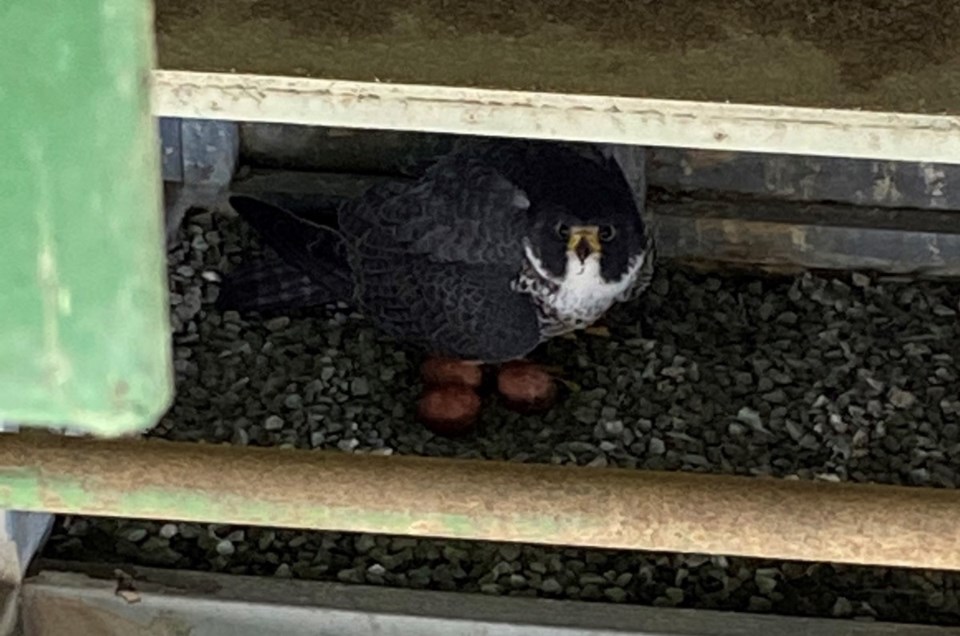The International Bridge peregrine falcons are back!
According to a news release issued today by the International Bridge Administration (IBA), the pair that has nested this year is the same that successfully nested last year, hatching one chick.
The IBA reports that there are currently three eggs in the nest box atop the bridge that spans the St. Marys River between the U.S. and Canada.
Avid bird watchers can keep an eye on the nest box and its occupants thanks to the live video stream 'FalCam' that was installed by the IBA several years ago.
Full text of the IBA news release follows:
Peregrine falcons at the Sault Ste. Marie International Bridge are off to a good start this year, after they returned to their nest box in early spring and recently laid three eggs.
Karl Hansen, bridge engineer for the International Bridge Administration (IBA), reported that a pair of peregrine falcons successfully nested atop the bridge between the U.S. and Canada. Nest boxes for the peregrines have been installed since 2010 on the International Bridge. Last year, the same pair of peregrine falcons successfully nested on the bridge, hatching one chick. Over the years, the site has been a great success, hatching 30 falcon chicks since IBA staff started counting the birds, Hansen said.
Several years ago, the IBA added a video camera trained on the nest box, the "FalCam." The live video stream, which has become very popular, is viewable here, offering bird watchers a front row seat for the seasonal return of the endangered raptors.
A team from the Michigan Department of Natural Resources (DNR) typically bands the birds at the IBA mid-summer. Color-coded bands attached to the legs of young birds allow scientists to track the movements, reproductive behavior and population growth of the falcons.
Michigan lost its peregrine falcons in the 1960s and 1970s due to the use of DDT and other environmental contaminants. Since conservation efforts started in the mid-1980s, the number of peregrines has fluctuated, but has generally increased since the 1990s, according to the DNR.
The peregrine falcon has been removed from the federal endangered species list but is listed as an endangered species in Michigan, protected by state and federal law. Peregrines have adapted to city habitats, nesting on tall buildings, smokestacks and bridges around the world.
High-speed hunters capable of flying at 200 mph, the peregrines may help keep populations of nuisance pigeons under control. While researchers have found pigeons make up a relatively small portion of the falcon diet, the dangerous predators may play a role in frightening them away from bridges. Keeping pigeons away is seen as potentially saving the IBA maintenance money down the line, as pigeon droppings can damage paint on metal bridge surfaces.
